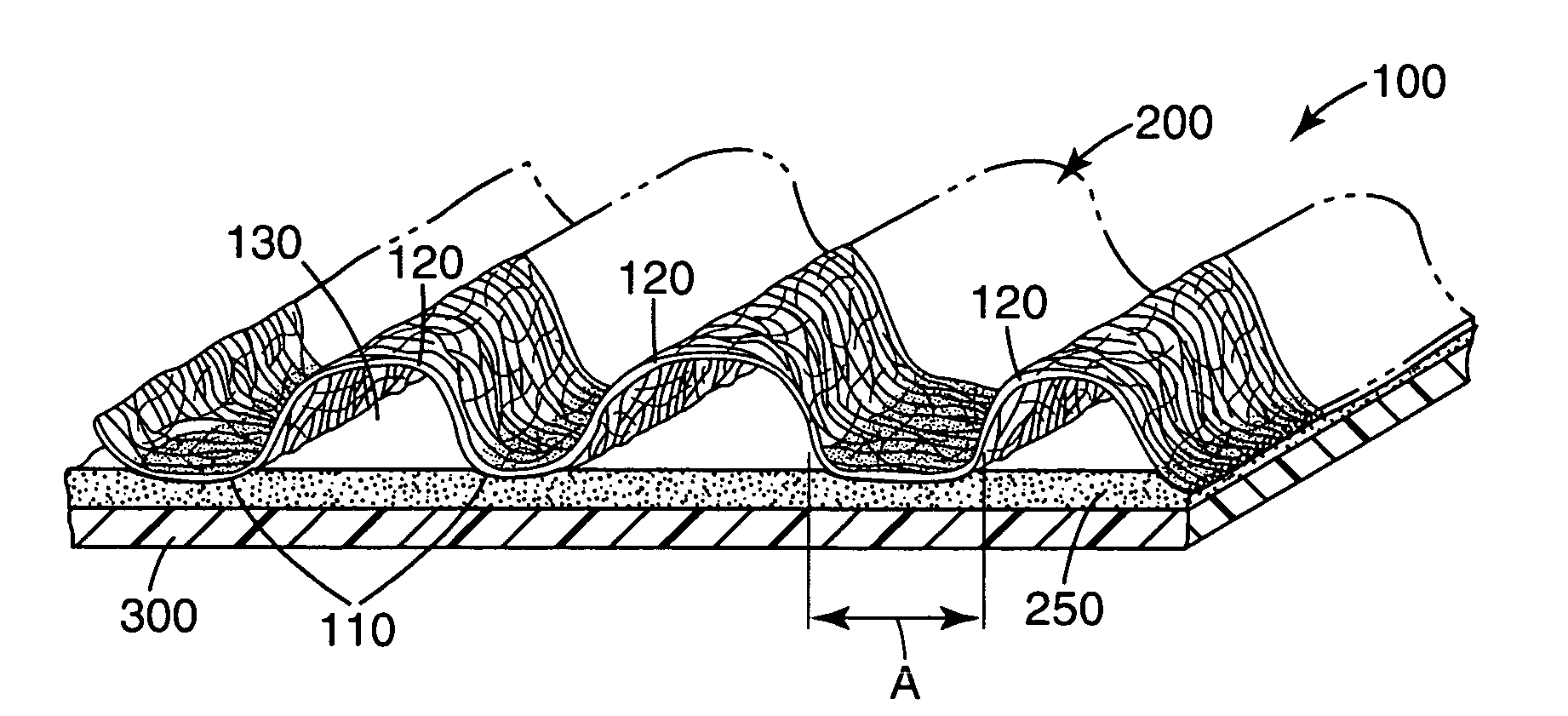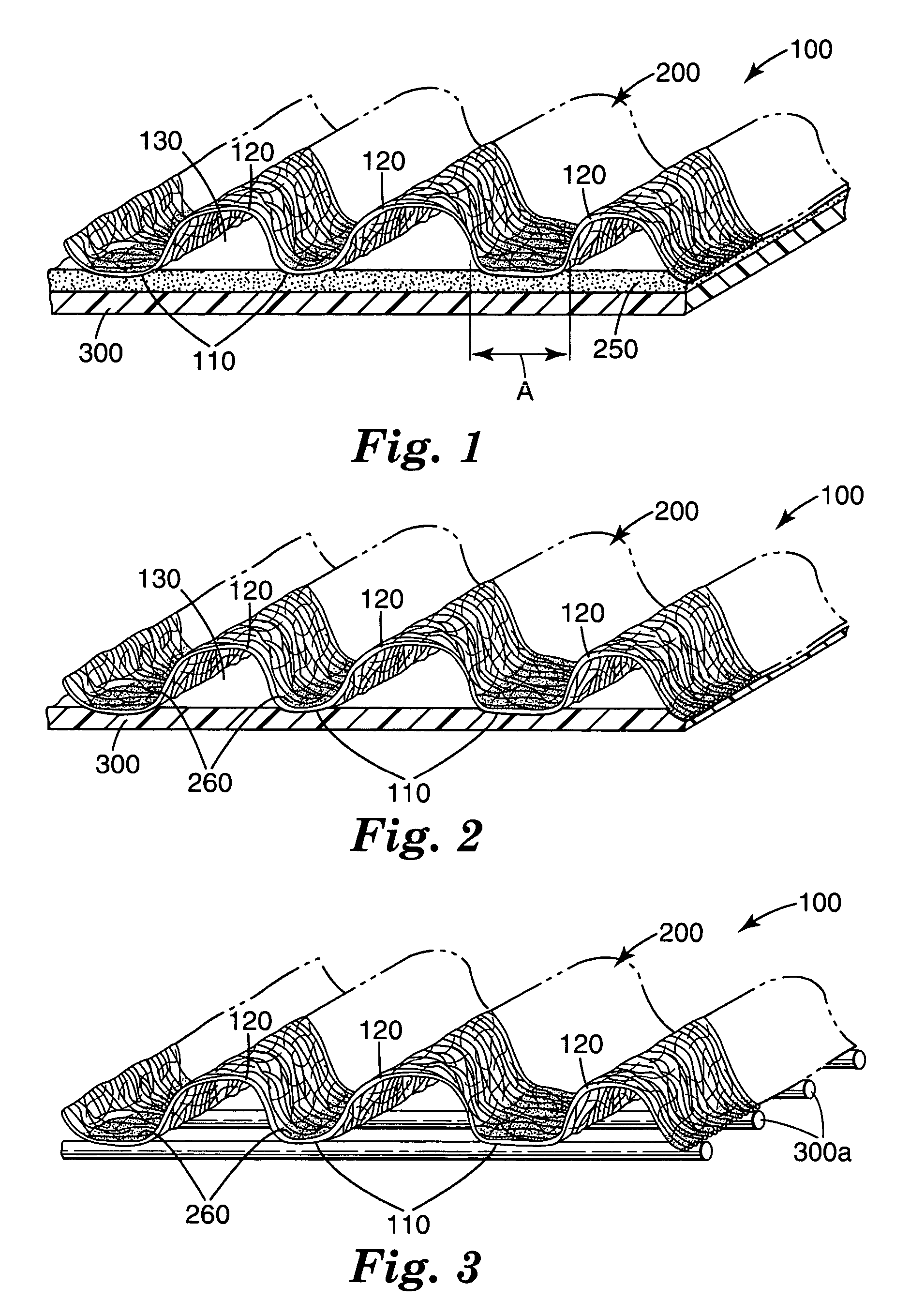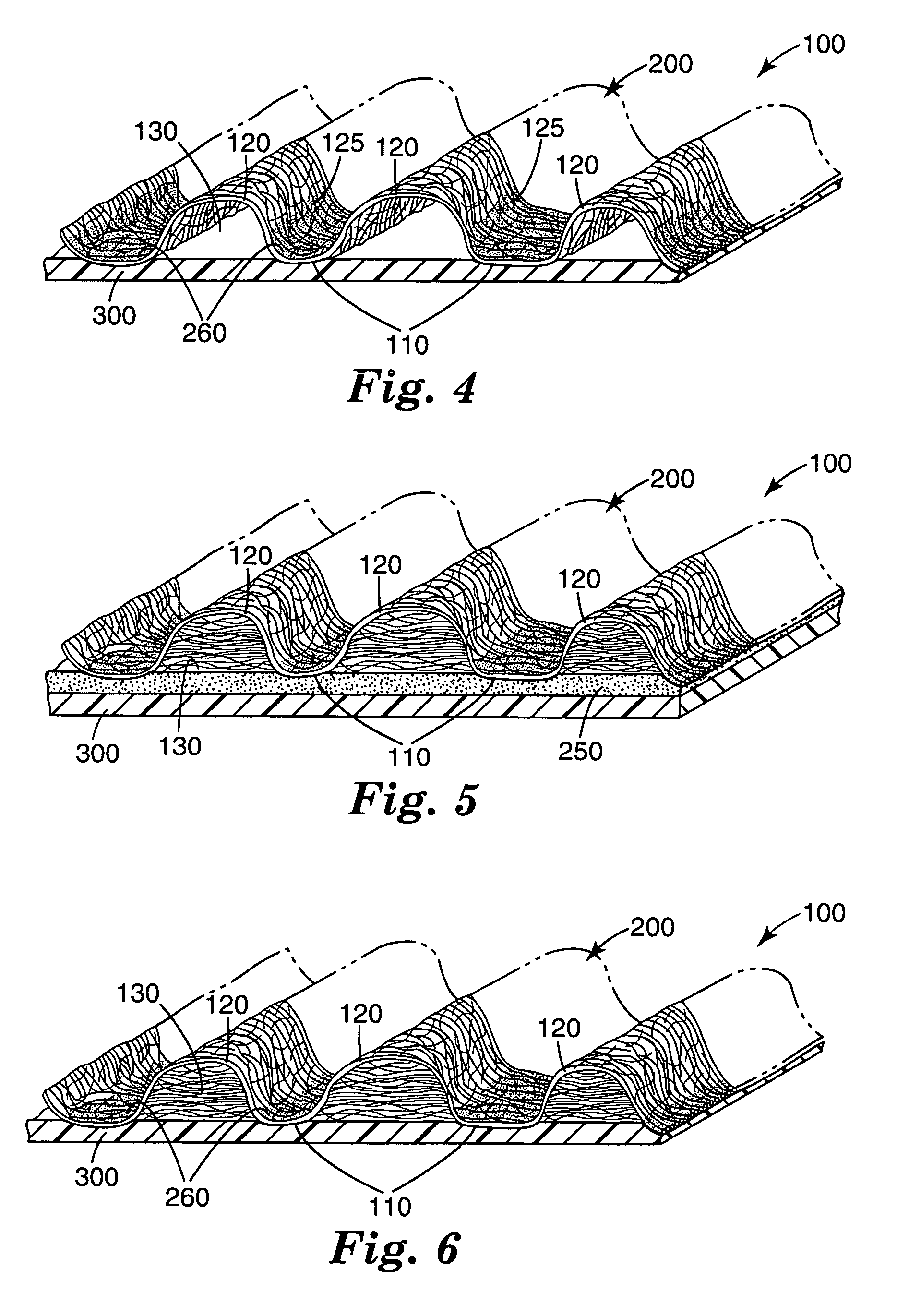Wipe
a technology of wands and wands, applied in the field of wands, can solve the problems of scratching the surface, difficult manufacturing of embodiments, and poor durability
- Summary
- Abstract
- Description
- Claims
- Application Information
AI Technical Summary
Benefits of technology
Problems solved by technology
Method used
Image
Examples
example 1
[0070]A wipe of material was prepared using the method and equipment illustrated in FIG. 9 except that the first and second intermeshing patterned rollers (corrugating members 26 and 27, respectively) that were used were machined with a diamond pattern. A wiping member (nonwoven N1) was fed into the nip between first and second intermeshing patterned rollers that were machined with a diamond pattern such that there were approximately 9 diamonds per square inch (6.45 cm2) with a space between each diamond. Each diamond was machined to have a flat top-surface having a width of about 8 mm. The patterned sheet of nonwoven was shaped such that there were raised regions or peaks and anchor portions that formed valleys along the nonwoven web, each raised region or peak being about 3 mm high and each anchor portion being about 4 mm wide. The first patterned roller was heated to 93° C., whereas the second patterned roller was heated to 149° C. A hot melt adhesive commercially designated HM-1...
example 2
[0071]Example 2 was prepared according to the procedure described for Example 1 above with the following changes. Nonwoven N3 was used as the wiping member that was fed into the nip between the first and second intermeshing patterned rollers, and a smooth steel roll was used as the first roller instead of a patterned roll. Instead of extruding a hot melt adhesive layer, a pre-formed adhesive coated backing member was used and was prepared in the following manner. A hand-spread adhesive was prepared by dissolving a 60 grams sample of dry Kraton™ polymer HM-1902 (available from HB Fuller, St. Paul, Minn.) in 40 grams of toluene. The solution was agitated overnight to get a good uniform mixture. The solution was then coated onto a silicone release liner using a knife coater and was oven dried at 70° C. for 10 minutes, yielding a 3 mil (0.076 mm) thick dry adhesive coating. The sample was left overnight and was then laminated at room temperature onto a polypropylene backing member (nonw...
example 3
[0072]Example 3 was prepared using the method and equipment illustrated in FIG. 10. The procedure was similar to the procedure described in Example 1 above except that nonwoven N3 was used as the wiping member, a smooth steel roll was used as the first roll instead of a patterned roll, and the HM-1902 adhesive was extruded at 113° C. at a basis weight of 29 grams per square meter.
PUM
| Property | Measurement | Unit |
|---|---|---|
| compressible | aaaaa | aaaaa |
| height | aaaaa | aaaaa |
| height | aaaaa | aaaaa |
Abstract
Description
Claims
Application Information
 Login to View More
Login to View More - R&D
- Intellectual Property
- Life Sciences
- Materials
- Tech Scout
- Unparalleled Data Quality
- Higher Quality Content
- 60% Fewer Hallucinations
Browse by: Latest US Patents, China's latest patents, Technical Efficacy Thesaurus, Application Domain, Technology Topic, Popular Technical Reports.
© 2025 PatSnap. All rights reserved.Legal|Privacy policy|Modern Slavery Act Transparency Statement|Sitemap|About US| Contact US: help@patsnap.com



